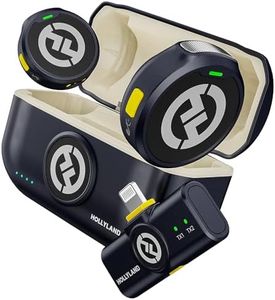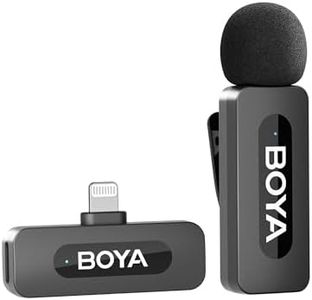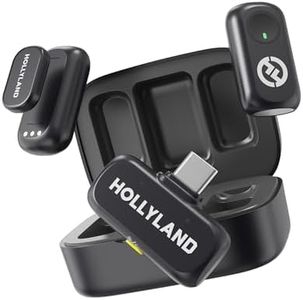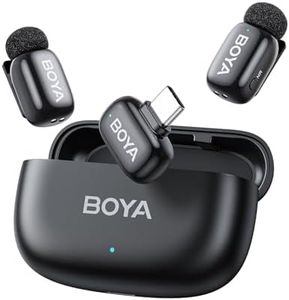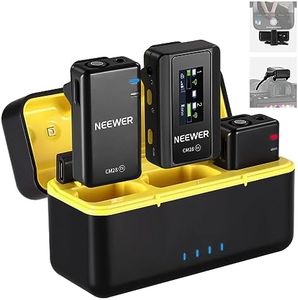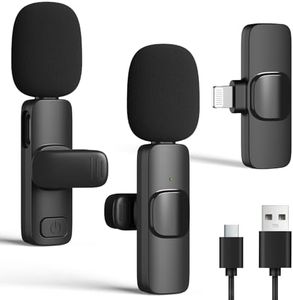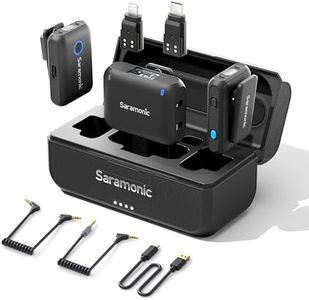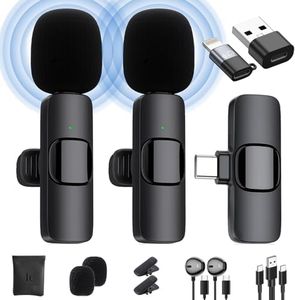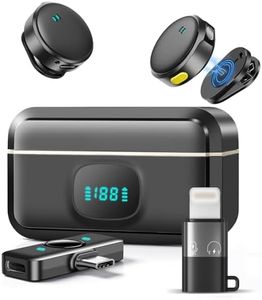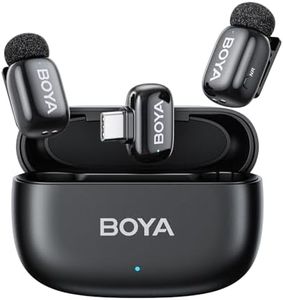We Use CookiesWe use cookies to enhance the security, performance,
functionality and for analytical and promotional activities. By continuing to browse this site you
are agreeing to our privacy policy
10 Best Lapel Microphones For Iphones
From leading brands and best sellers available on the web.Buying Guide for the Best Lapel Microphones For Iphones
Picking a lapel microphone for your iPhone can greatly improve the quality of your audio for videos, calls, or podcasts. A lapel (or lavalier) microphone clips easily to your clothing, making it a hands-free solution for capturing clear and focused sound. To find the best one for your needs, you'll want to pay attention to some key features that impact compatibility, sound quality, and usability. Understanding these features will help you make a smarter decision tailored to how and where you plan to use your microphone.Connector TypeThe connector type is the physical plug that attaches the microphone to your iPhone. This is important because recent iPhones use a Lightning port, while older ones have a headphone (3.5mm) jack. Some microphones include adapters, but not all. To choose, first check whether your iPhone has a Lightning port or a 3.5mm jack. If you're not sure, look at your phone's ports: a small, oval-shaped port means Lightning, while a round port is 3.5mm. Choose a microphone with a matching connector or confirm if you have (or want to buy) an adapter. If you want the simplest setup, get a mic that connects directly to your current port.
Microphone PatternThe microphone pattern refers to the direction(s) from which the mic captures sound. The two common patterns are omnidirectional (picks up sound from all around) and cardioid (focuses on sound from one direction). If you plan to record in relatively quiet places or want to capture multiple voices nearby, an omnidirectional mic is more forgiving to positioning. On the other hand, a cardioid mic is better if you're in a noisy environment or want to focus solely on your voice, as it helps block out surrounding noises. Your intended use—a private interview, a noisy street report, or an indoor meeting—should guide your choice.
Sensitivity and Sound QualitySensitivity is a measure of how well the microphone picks up quieter sounds. Higher sensitivity means it can record softer voices or distant sounds more clearly. However, it might also pick up more background noise. Generally, for casual use or in controlled environments, medium sensitivity is sufficient. If you have a soft voice, or if you're sometimes farther from the mic, look for models that mention high sensitivity. Sound quality also involves clarity and how natural your voice sounds. Listen to sample recordings if possible, or read reviews, and focus on how the mic reproduces speech.
Cable LengthCable length determines how far you can be from your iPhone when using the microphone. Shorter cables (about 1 meter) are more portable and convenient for quick setups, while longer cables (2 meters or more) offer more freedom of movement, which is useful for presentations or interviews. If you mostly record while sitting close to your phone, a short cable keeps things tidy. If you expect to move around or need more flexibility, choose a longer cable, but be prepared to manage extra slack.
Compatibility and App SupportNot every microphone works with every app out of the box, especially on iPhones with stricter software controls. Some microphones are 'plug-and-play,' meaning they work instantly with the default camera or voice apps. Others may require a specific app or settings adjustment. Before buying, check whether the microphone is compatible with the tasks you plan to do—filming, recording music, or making calls. Make sure it works with popular iPhone apps or any third-party recording app you want to use. Choosing a widely compatible microphone makes setup hassle-free.
Build Quality and Clip DesignBuild quality refers to how sturdy and durable the microphone and its clip are. A robust clip keeps the mic securely attached to clothing, which is important when you’re moving around. Cheaper builds may break or slip off easily, leading to frustration during use. If you anticipate using the mic often, outdoors, or on the go, pick one with a solid build and a strong clip. For occasional or gentle use, sturdiness is less critical, but still avoid very flimsy designs.
